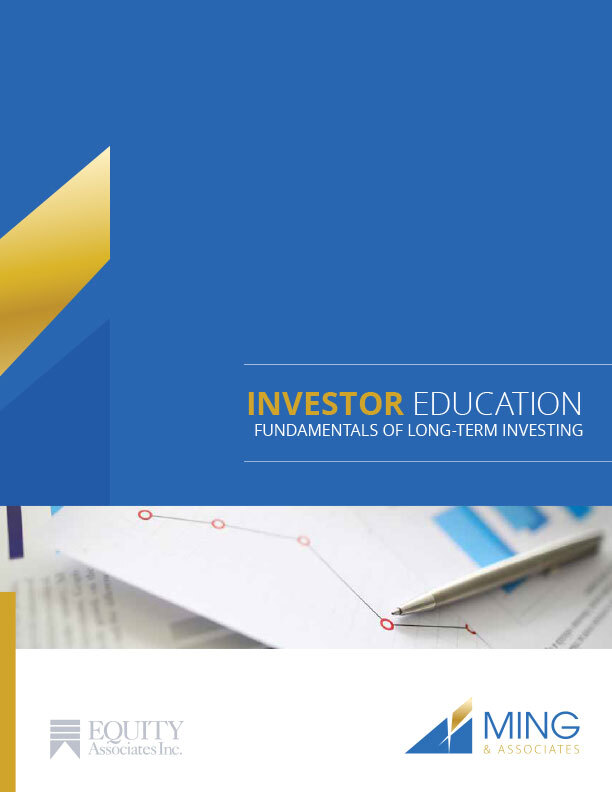YOUR GUIDE TO INVESTING
Are you investing for your future?
This guide is for investors of all levels to learn the fundamentals for long-term investment success.

This guide will look at:
Risk vs Volatility and the misconceptions commonly associated with these terms.
Investor behaviour and why many investors fail to achieve their goals.
Why appropriate asset allocation and diversification are critical to achieving your goals
Understanding Account types, Asset Classes, as well as potential costs involved in investing
Download your Free Investor Guide Today!
Enter your information below to access our free guide.
We DO NOT SPAM. EVER. Your information will not be shared and will only be used internally by Ming & Associates. We are compliant with PIPAEDA.
The term Investing is so broadly referenced in today’s society that it can be an intimidating subject to handle alone.
There are many different types of investments you could make; essentially to invest means to commit money today with the expectation of earning a future return.
The first step in any investment is to determine your goal for the money. Is it for retirement? Children? Legacy? Just like any purchase you make; it is important to know why you are doing it. It is this goal that will be at the forefront of your account and investment selection. In the long run, it is your performance against your goal that truly matters, not how you stack up to the multitude of various investment benchmarks out there.
RISK & VOLATILITY
A key reason many investors fail is that they misunderstand the concepts of risk and volatility. Risk is measured as the probability that you will fail to achieve your goals. Volatility is the price swings of an asset that occur both higher and lower than the long-term value or trendline.
INVESTOR BEHAVIOR
When it comes to investing and finances, individuals are not always as rational as you think. Numerous studies have been completed on behavioural finance, which attempts to understand how human emotions influence investors’ decision-making process. The studies consistently conclude that the average investor considerably fails to achieve average market returns. The reason for this is that investors feel obligated to react to short-term volatility and performance and lose sight of their long-term goals.
ASSET ALLOCATION
The decision of what mix of assets to hold is the most important one most investor will make, and deserves to be fully understood. The volatility and return of any mix of investments depends on how the portfolio is put together and what it is trying to achieve. As such, it is necessary to determine your investment objectives and time horizon before determining which asset allocation mix fits your needs
COSTS & FEES
All investments and financial products carry costs. Many investments have the costs embedded within the investment product such as a GIC, Mutual Fund, ETF (Exchange Traded Fund) or the purchase and sale of a Bond. Other costs you pay directly such as trustee fees, trading fees or fees to money managers for portfolio management. The first step is understanding that different types of investments have different costs.
We hope you find this educational guide helpful. Our financial advisors would be pleased to hear from you if you need assistance in creating an investment solution that is right for you.
We sincerely thank you for taking the time to visit our site. For a complimentary copy of the Investor Guide, please enter your email below. Should you wish to have a hard copy of the guide, please email [email protected] and we would be glad to help.
Download your Free Investor Guide Today!
Enter your information below to access our free guide.
We DO NOT SPAM. EVER. Your information will not be shared and will only be used internally by Ming & Associates. We are compliant with PIPAEDA.
